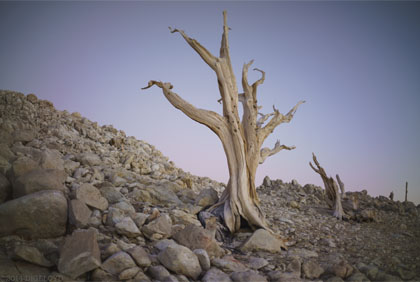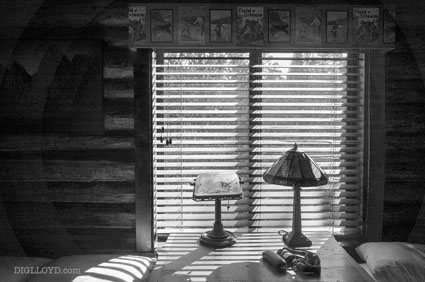Reader Inquiry: Banding, Posterization, Color Shifts (and the right workflow)
Alex C writes:
Do you know if full frame Leicas - and I'm thinking of the new Leica Q in particular - suffer the same 'bullseye' colour shifts that have been identified with the Sony A7 series [diglloyd: often but not always inappropriate camera settings and workflow], especially with the Sony/Zeiss 35/2.8? (I've also seen them with my A7R and Sony 28/2.) I'm guessing the Leicas have a similarly short flange-sensor distance.
[diglloyd: flange distance is irrelevant].So-called “bullseye” posterization is a fairly well known problem with the A7 series and WA lenses. See https://www.dpreview.com/forums/thread/3588565
[diglloyd: hardly anyone processes images properly, forums are largely a waste of time with mostly disinformation smothering a nuggest of wisdom here and there. Posting such an issue with no mention of key things like camera space and color space and bit depth and display calibration and output handling etc makes the whole discussion futile].Here's a shot I took with the new 28/2 showing the same issue (processed to exaggerate the effect)... You might think it doesn't matter too much in the real world, but if you shoot a lot of B&W, as I do [diglloyd: not relevant, and like to darken blue skies a bit by pulling the blue channel luminance, you can very easily get this irritating 'bulls eye' pattern.
I've found this to be more bothersome than RAW compression and shutter shock, although I wonder if the RAW compression is part of the problem here? It's something to do with the strong vignetting with these Sony wides, together with some aspect of the sensor design and maybe also the compression algorithm. I'm just wondering if full frame Leicas are similarly affected?
DIGLLOYD: This is NOT a lens effect. It’s inappropriate camera settings and workflow technique. Not using 16-bit ProPhotoRGB just makes things even worse.
Shot discipline and proper workflow matter, always. Using 16-bit ProPhotoRGB? Nothing else is appropriate and there are other B&W techniques than yanking a channel which indeed will cause serious problems in 8-bit and/or narrow gamut color spaces and/or with lossy formats or JPEG originals.
My sense of it from seeing it with various cameras over the years is that the underlying issue is vignetting correction, exacerbated by the Sony 11+7 lossy file format and/or “cooked” raw processing, my biggest remaining gripe about Sony cameras (Sony ought to offer a real 14-bit lossless-compressed format, not a lossy average consumer format).
Regarding the bullseye effect: turn off lens corrections, particularly vignetting/shading correction. This can cause stepping effects, particularly for colors that are testing the range of the color gamut. Second, process into 16-bit ProPhotoRGB color space from the best quality raw the camera offers. If shooting JPEG, it’s game over—the discussion is a complete waste of time.
See Why a Wide Gamut Color Space Matters in DAP.
The example JPEG sent is in sRGB (aka “sad RGB”) and indeed it is troubled, hardly a surprise given the subject matter. But also pointless for evaluation (sRGB JPEG = total crap for some images). The sRGB color space is a terrible choice for any serious work* and does not even merit discussion when this banding/posterization topic arises (because sRGB has a problematic gamut and only 8 bits and requires lossless mode if any hope is to be had for difficult gradients). Occassionally I can’t save some images from the 16-bit TIF originals into JPEG without careful evaluation of which color space and how much compression—and even then there can be issues. Anyone concerned with this issue has no case at all if workflow is fundamentally flawed (shooting JPEG and/or using sRGB or even AdobeRGB color space).
Leica M and Leica Q uses a 12-bit lossless-compressed or uncompressed format. The Leica M9 had occasional highlight posterization issues, but this generally had to do with clipping, not so much tonal transitions—a limitation of the sensor dynamic range—not the same as gradient transition issues. The Leica M shading correction could create gradient banding issues with the right image, so it cannot be ruled out, but I have not had difficulties with the Leica M240, so I’d say it’s rare.
* sRGB can be fine for many images; the point is that for some images it is awful, causing posterization and complete loss of image detail with color outside the gamut. Ditto for AdobeRGB—it has a wider gamut than sRGB but still falls well short of the gamut of most cameras today.
This bristlecone image shows the Sony banding issue as discussed in Zeiss Loxia 35/2 Biogon Aperture Series: Solo Bristlecone, Earth Shadow. With all lens corrections disabled on the Sony A7R, it shows why the Sony file format sucks—my Nikon have never delivers such banding nastiness.
Ricoh’s vignetting correction
I actually got Ricoh to fix (or mitigate) their issue in a way: by adding an option to NOT do vignetting correction. That can be troublesome, but it forestalls issues like this, which show prominent circular ring artifacts. Sony has an option to disable vignetting correction, and I almost always disable it.
See also:
All cameras ought to offer lossless raw formats, 14-bit or 15-bit strongly preferred. There is no excuse for offering a $2K or $3K camera whose best raw format throws away image data.
- Zeiss Loxia 35/2 Biogon Aperture Series: Solo Bristlecone, Earth Shadow
- Sony A7R: First Look with the FE 35mm f/2.8 Sonnar ZA
- Does the Sony A7R have Circular Ring Artifacts?
- Sony 11+7-bit Delta Compression Posterization Update: RawDigger
- Sony’s 11+7-bit Delta Compression, Posterization in Some Situations
- Sony’s 11+7-bit LOSSY File Compression: 32-pixel Line Artifacts Clearly Visible on Star Trails
- Sony 11+7 Bit File Format: Gapping
- Ricoh GR: Circular Ring Artifacts (“Ring Shadow Effect”) Followup
Matt S writes
100% spot on. I noticed this years ago in ACR but was quite confused for a while! :-)
DIGLLOYD: After nearly a decade or so of seeing just about every significant camera and lens on the market, I notice everything, and I eliminate anything that causes issues—hardware or software or settings or workflow faults.
































